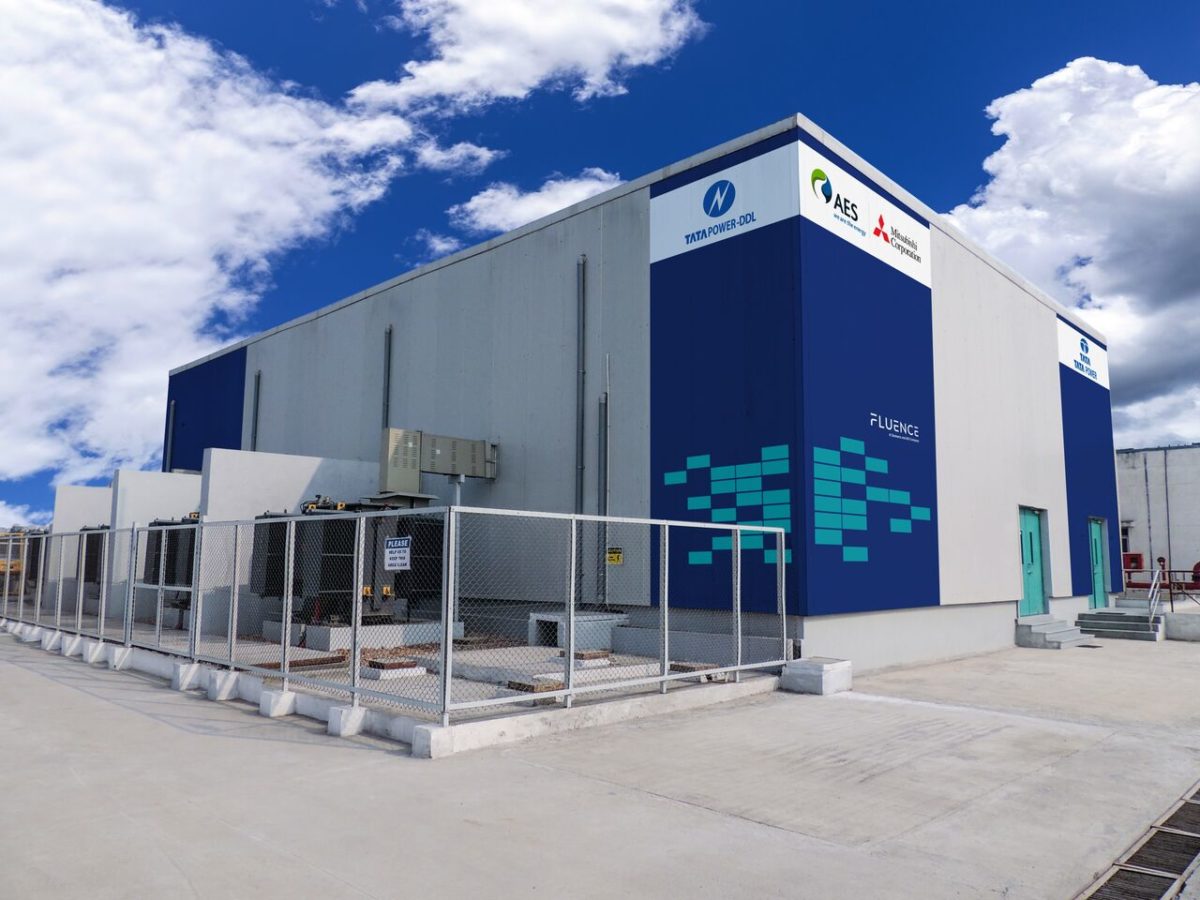The market for battery storage and green hydrogen could scale up rapidly in India, bolstered by government policy and private company ventures, according to a new briefing note from the Institute for Energy Economics and Financial Analysis (IEEFA).
“Grid-scale energy storage technologies will play a critical role in India’s decarbonization journey, helping to integrate the 450 gigawatts (GW) of variable renewable energy capacity targeted by 2030 into the grid,” says the note’s author IEEFA analyst Kashish Shah.
“The Government is giving the right push for the Battery Energy Storage Systems (BESS) market through production-linked incentive schemes, big battery storage capacity tenders and improving the market structure to be more competitive.”
Shah adds Indian conglomerate Reliance Industries Ltd’s recent entry into the country’s clean energy scene, including plans for battery manufacturing and green hydrogen production, is providing huge impetus.
“By acquiring Norwegian solar module manufacturer REC and a 40% stake in India’s Sterling and Wilson Solar, Reliance is already showing it’s serious about delivering on its ambition to lead renewable energy investment in India,” he says.
“India’s battery market could boom quickly,” Shah adds, “just as we have seen happen in other markets such as the U.S. and Australia.”
To date, the cost of grid-scale battery storage has been prohibitive for India as the nation lacks a domestic battery manufacturing value chain. In comparison, globally the cost of battery storage has reduced dramatically – the price for a standalone lithium-ion battery set-up is projected to drop to US$58/kWh by 2030 from US$1,100/kWh in 2011.
Momentum in energy storage
The note points to positive signs that the market in India is gearing up for batteries with growing momentum from private power companies. Tata Power’s 10MW/10MWh (1-hour storage) battery in its Delhi distribution network is currently the only grid-scale battery operating in India but the company’s upcoming storage project in Ladakh – comprising 50MWh of storage capacity co-located with 50MW of solar capacity – will be India’s largest battery.
The involvement of credible government-owned counterparties is vital to enabling capital deployment for battery storage. State-owned entities, Shah says, have also now come into the fold for facilitating grid-scale battery storage development, citing the Solar Energy Corporation of India (SECI) and NTPC tenders for development of 2,000MWh and 1,000MWh of battery storage capacity, respectively.
In another policy development, the Central Electricity Regulatory Authority (CERC) aims to bring battery storage and pumped hydro storage (PHS) into the ambit of the frequency control and ancillary services (FCAS) market.
“Valuing the speed and accuracy of grid balancing services that batteries and PHS could provide at competitive market prices will allow a clear revenue stream for the owners of these storage assets,” says Shah.
“Domestic enterprises and global giants, attracted to India’s market potential and buoyed by government support, are assessing local battery manufacturing.” And, “further regulations will be required to guide development and underpin commercial success.”
Building the green hydrogen value chain
Meanwhile, steel giant ArcelorMittal has plans to build 4.5GW of solar capacity in Rajasthan and green hydrogen production capacity backed by solar and wind in Gujarat. Also, ACME Solar, one of India’s biggest solar developers, has commissioned the world’s first commercial pilot of integrated green hydrogen and green ammonia production facility in Rajasthan.
“As with batteries, the green hydrogen industry will require the building of a domestic hydrogen production value chain,” Shah says. “The most important part of this value chain is the electrolyzers for which the costs have come down across the globe, led by makers in the U.S., China, and Scandinavia.”
The note points out that to support this value chain, the government plans to implement a green hydrogen consumption obligation (GHCO) mechanism in fertilizer production and petroleum refining, similar to the renewable purchase obligation (RPO). To further encourage the usage of green hydrogen by industries, the fuel has been included under the RPO regulations.
There is also interest in developing industrial clusters that pair green hydrogen production with its industrial use, such as hubs of steel, coal, fertilizer, biogas, and heavy transport.
“These are all industries that have much to gain from a transition to green hydrogen,” says Shah. “Similar clusters are under development in the Netherlands, Germany, the UK, and Australia.”
This content is protected by copyright and may not be reused. If you want to cooperate with us and would like to reuse some of our content, please contact: editors@pv-magazine.com.









By submitting this form you agree to pv magazine using your data for the purposes of publishing your comment.
Your personal data will only be disclosed or otherwise transmitted to third parties for the purposes of spam filtering or if this is necessary for technical maintenance of the website. Any other transfer to third parties will not take place unless this is justified on the basis of applicable data protection regulations or if pv magazine is legally obliged to do so.
You may revoke this consent at any time with effect for the future, in which case your personal data will be deleted immediately. Otherwise, your data will be deleted if pv magazine has processed your request or the purpose of data storage is fulfilled.
Further information on data privacy can be found in our Data Protection Policy.